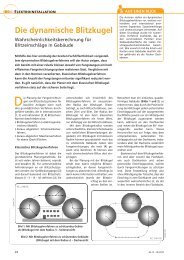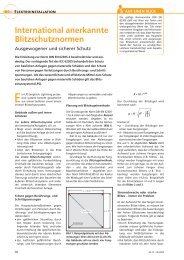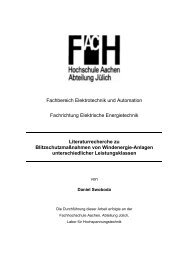Simulation of electric and magnetic fields using FEMM - FH Aachen ...
Simulation of electric and magnetic fields using FEMM - FH Aachen ...
Simulation of electric and magnetic fields using FEMM - FH Aachen ...
You also want an ePaper? Increase the reach of your titles
YUMPU automatically turns print PDFs into web optimized ePapers that Google loves.
But here we have a non-symmetric cable, so the values we calculated can only be used as<br />
references<br />
.<br />
If we want to define the voltages, click on “Conductors” <strong>and</strong> then fill in the names <strong>and</strong> values.<br />
Here we have the values <strong>of</strong> voltage, so we fill the blank under “Prescribed Voltage”.<br />
Otherwise we can fill the “Total Charge, C” if we have the value in unit Colum.<br />
Voltage on Layer 1 is the total voltage (130kV) from center <strong>of</strong> cable to the ground.<br />
Figure 1-28 Voltage on layer 1<br />
Ground<br />
Figure 1-29 Ground<br />
Equation 2<br />
→C‟1/C‟2=10/1<br />
→U1/U2=C‟2/C‟1=1/10<br />
Uges=U1+U2=130kV<br />
→U1=11.82kV U2=118.18kV<br />
Select an arc segment, hit space bar <strong>and</strong> then in the column “in conductor”, we can choose<br />
which conductor it should be in. As shown below.<br />
But set the middle circle to “In conduct: None”, we regard it as a non-material layer.









